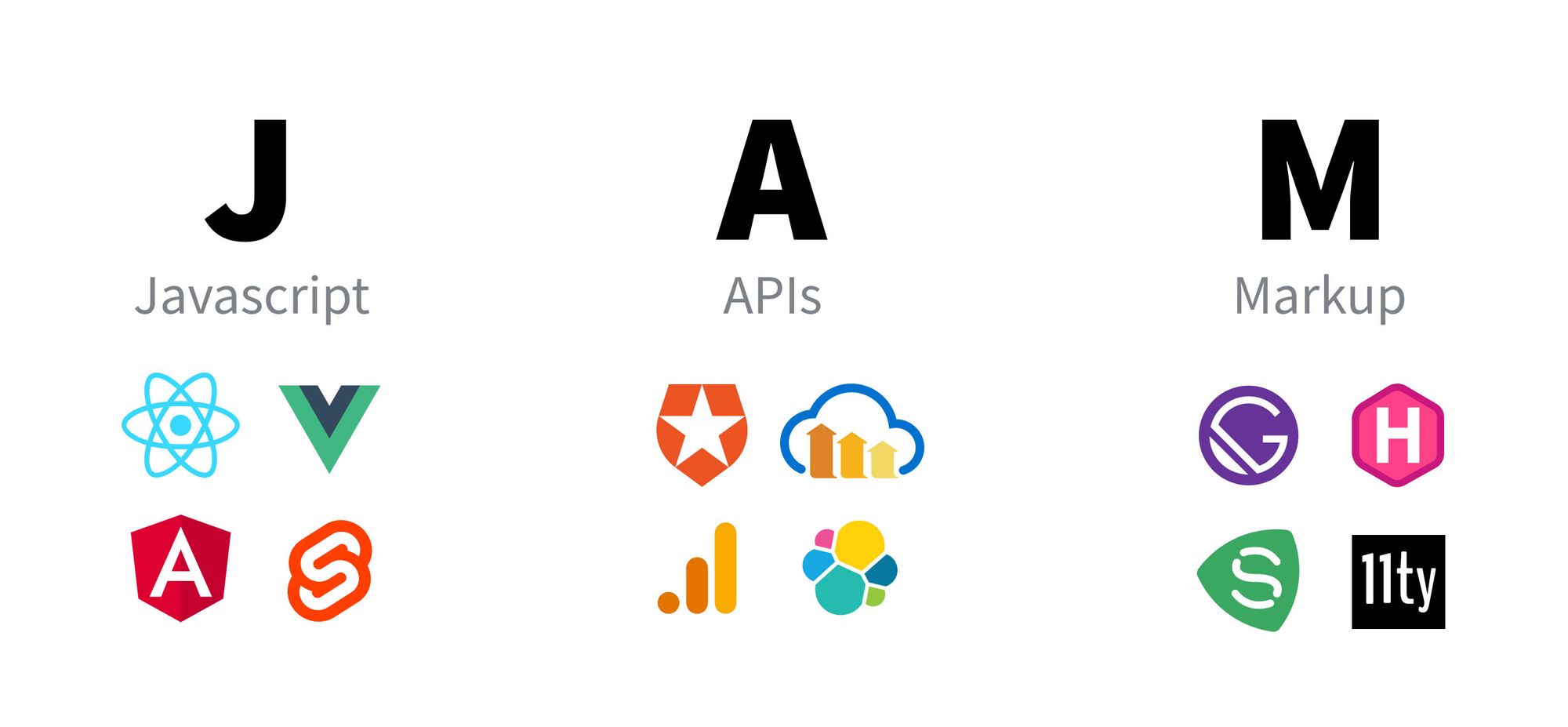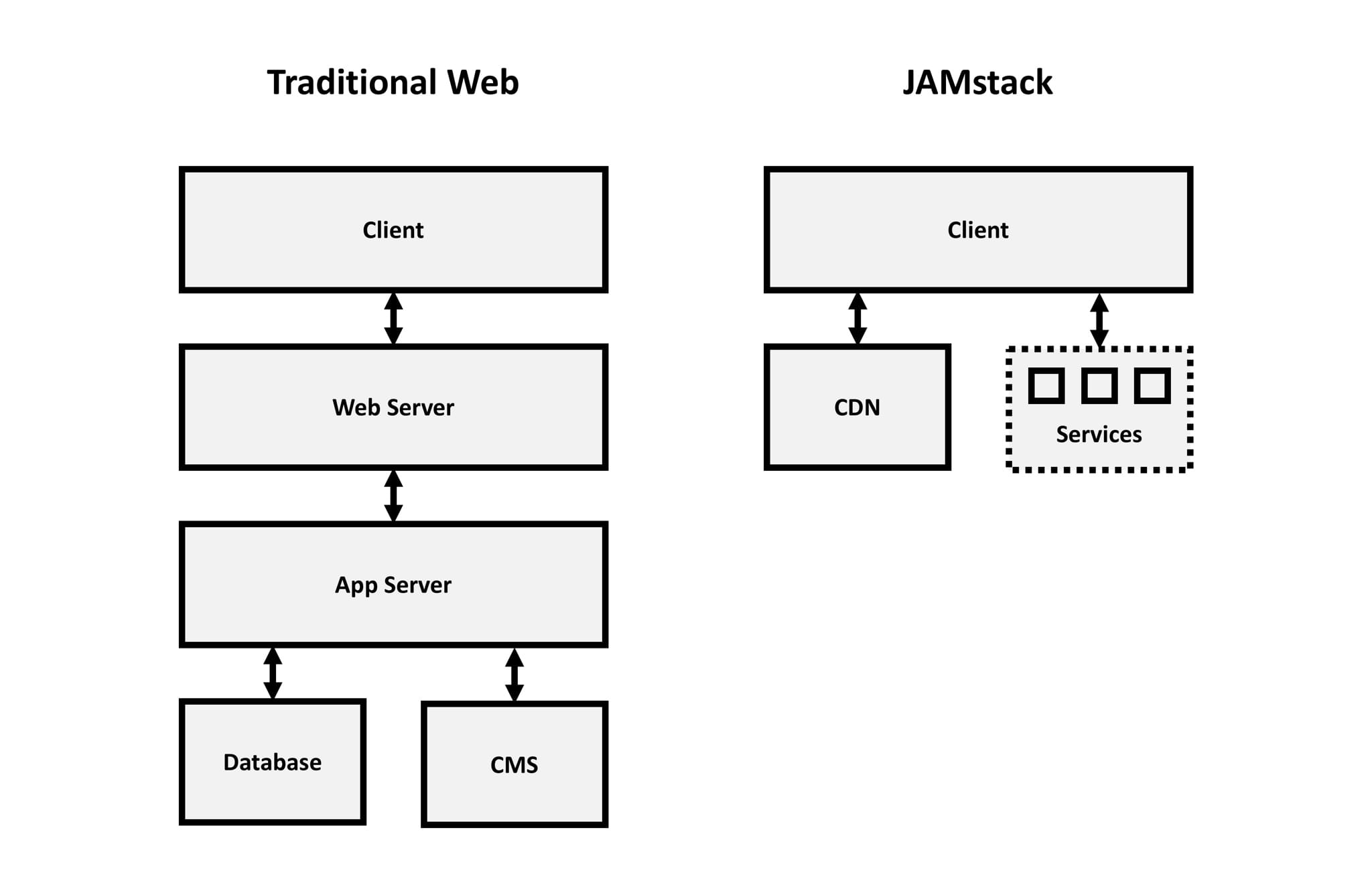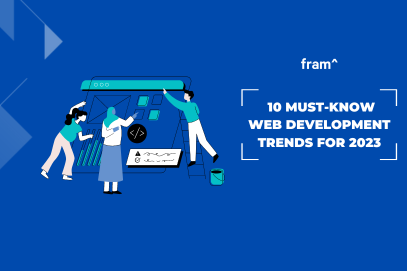web technology
Jamstack Introduction
As the demand for better, faster websites grows, so do the technologies to build them. And as you search for these technologies, you’ve probably come across the term “Jamstack”. Jamstack has been proven to be effective and efficient in building modern sites. Have a look at some amazing websites built on Jamstack like Louis Vuitton and Re:wild – Leonardo DiCaprio Foundation. But what exactly is Jamstack and what makes it so great? Let’s go through it with this article.
What is Jamstack?
Jamstack is not a programming language. It’s an innovative architecture to build websites. The “JAM” in Jamstack is an abbreviation for Javascripts, API, and Markup. It allows developers to serve static files on CDN, while still delivering a dynamic site.
It is important to note that Jamstack is not a technology stack, rather it is an architectural concept that defines a new way of building a website.

cre: freecodecamp.org
How is Jamstack different from traditional architecture?
The differences lie in how the data is pulled and served. Normal websites, when receiving a request from users, create HTML requests to the server. The server then pulls data coordinating with the HTML to display on the browser. This process repeats every time a user enters the site URL. This means the server has to process a huge number of requests.
With Jamstack sites, the data is pulled only once and ready to serve from the CDN (Content Delivery Network). Whenever the user requests the content, data can be delivered directly from the CDN via pre-built HTML. Hence, this approach significantly cuts down the number of requests to the server.
Jamstack sites have a dominant feature: decoupling. The front end and back end of a Jamstack site can be developed separately. This allows for easy upgrading or maintenance with a simple switch. Whereas with traditional architecture, developers have to go through the whole process of building the application and ship it to the server.

What you can get from a Jamstack site
Sites with Jamstack are fast
As mentioned above, with pre-built files delivered from a CDN, the content on Jamstack sites can load much faster. Moreover, the response time also decreases, which could improve the user experience. Who doesn’t love a fast site!
Jamstack sites are more secure
Another strength of Jamstack sites is security. The front end and back end of the site work via an API. This means that the process is “practically serverless”. As everything works without going through the server, the chance to attack the server is lower. In short, Jamstack sites are less vulnerable because the server and the database have less exposure.
Jamstack sites are highly scalable
Normal sites, when they suddenly get a huge traffic, would crash because they cannot handle all the requests. Then, the website owners will have to increase the capacity to meet the demands. As the business expands, you’ll need to constantly scale up your website. But then, what if the traffic is not as expected and you need to scale down?
None of these would be a problem with Jamstack sites since they use CDN. The CDN allows content to be delivered from different servers all around the world. Therefore, it can handle a large amount of traffic while preventing the origin server from being overloaded.
Sites built with Jamstack cost less
With Jamstack sites, you’re only hosting static files, and the cost is really low or even free.
What you need to create your own Jamstack website
Front end
Jamstack frontend includes HTML, JavaScript and CSS files. Other than that, you’ll need the UI frameworks and web frameworks. The web frameworks or SSG (Static Site Generator) create the static HTML files. While the UI frameworks process these files into dynamic and interactive content.
You don’t have to build the web frameworks from scratch. There are many Frameworks available to easily create your site like Gastby, Next.js, Hugo. Or you can go to StaticGen for more options.
Back end
On the back end of Jamstack sites, there’s the API. The API usually is a headless CMS, but it can also be a hosted datastore, or a custom application. There’s a list of available headless CMS for you to choose from.
Deployment Platform
As mentioned above, hosting a Jamstack site is hassle-free with the CDN. The most popular choices to host Jamstack sites are Vercel, Netlify, Firebase, or AWS.
Conclusion
Jamstack is gaining popularity in the last few years as a modern, efficient and cost-effective architecture to build websites. Additionally, the Jamstack community is also growing, making it easier to develop such sites. However, there is one big drawback of this modern architecture: not being beginner-friendly. Therefore, if you want to build a Jamstack website, you’ll need to find developers with the right skills and experience.
If you need assistance with your website development, fram^ – a leading software development company in Vietnam – is happy to lend a hand. With our expertise, we can help develop your desired website or provide the tech talents you need for your project. Contact us today!


